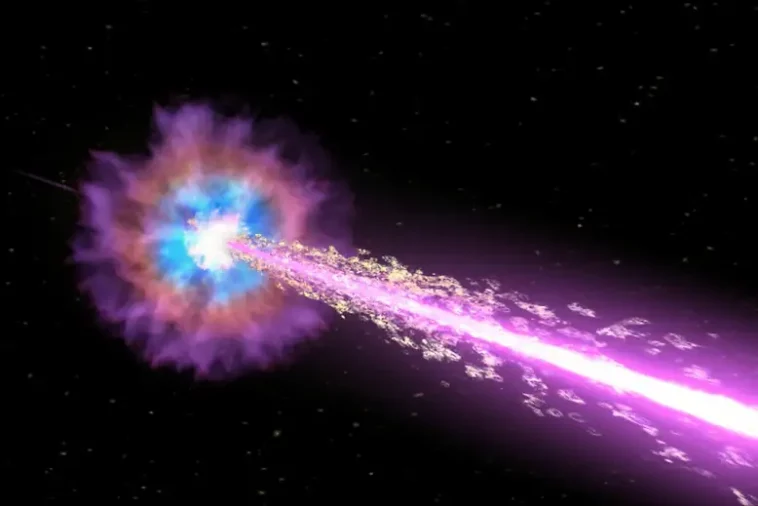A strange blast of radiation from space may upend how we categorise such flashes, called gamma ray bursts (GRBs). It seems to come from a black hole forming surprisingly slowly after two stars merge, indicating a gap in our understanding of black holes.
There are two main types of gamma ray bursts: short GRBs, which last less than 2 seconds and generally occur when two neutron stars smash together and collapse into a black hole, and long GRBs, which can last minutes and are associated with supernovas. But GRB 211211A, spotted in 2021, doesn’t fit in that dichotomy.
Four separate research groups observed the GRB, and they all saw the same thing: it definitely came from two stars colliding, but it lasted about one minute. “Two seconds is how long it takes in a merger for a black hole to form and eat up everything in its environment, so it’s very strange that this lasted a whole minute,” says Benjamin Gompertz at the University of Birmingham in the UK.
One of the teams suggested the merger may have left behind a huge, rapidly rotating neutron star called a magnetar, which could be powering the gamma ray emission after the initial collision. The other three concluded that it most likely left behind a black hole, but it’s not clear how that could create such a long GRB.
“In those few moments between the merger of the neutron stars and the formation of the black hole, there is a big question mark right now,” says Eleonora Troja at Tor Vergata University of Rome. “This is telling us that there is a missing piece of the puzzle that we didn’t even know was missing.”
The missing piece probably has to do with the behaviour of the black hole itself, says Troja. “The black hole is like the butler in a crime movie – you know how you watch a crime movie or TV show and the first suspect is always the butler? In astronomy, it’s the black hole, because we know that it has the ability to create things that we do not understand,” says Troja.
While GRB 211211A is by far the biggest outlier from the GRB categorisations, it isn’t the only one. Other “oddball” GRBs haven’t been observed so thoroughly, though, so studying this one will help us understand the others. “I’ve been calling this the Rosetta Stone of extended-duration GRBs because it’s letting us connect the physics to the observations in much worse datasets,” says Gompertz. We may need a third category of GRBs for these weird events, the researchers say.




GIPHY App Key not set. Please check settings